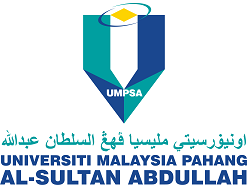Modelling of Water Flow and Nitrate Dynamics Through Partially Saturated Porous Media in Laboratory Condition using Hydrus-2D
DOI:
https://doi.org/10.15282/ijets.v5i2.1399Abstract
Due to the reducing availability of water resources and the growing competition for water
between residential, industrial, and agricultural users, increasing irrigation efficiency, by several
methods like drip irrigation, is a demanding concern for agricultural experts. The understanding of the
water and contaminants flow through the subsurface is needed for the sustainable irrigation water
management, pollution assessment, remediation, and groundwater recharge. In this study, the
Windows-based computer software package HYDRUS-2D, which numerically simulates water and
solute movement in two-dimensional, variably-saturated porous media, was used to evaluate the
distribution of water and Nitrate in the sand tank. The laboratory and simulation experiments were
conducted to evaluate the role of drainage, recharge flux, and infiltration on subsurface flow condition
and subsequently, on nitrate movement in the subsurface. The water flow in the unsaturated zone was
model by Richards’ equation, which was highly nonlinear and its parameters were largely dependent
on the moisture content and pressure head of the partially saturated zone. Following different cases to
be considered to evaluate- a) applying drainage and recharge flux to study domains, b) transient
infiltration in a vertical soil column and c) subsequently, nitrate movement in a 2D sand tank setup. A
single porosity model was used for the simulation water and nitrate flow in the study domain. The
results indicate the transient water table position decreases as the time increase significantly by
applying drainage flux at the bottom. Similarly, the water table positions in study domains increasing
in the domain by applying recharge flux. Likewise, the water flow profile shows the decreasing water
table elevation with increasing water content in the vertical domain. Furthermore, the nitrate transport
dynamics was dominated by advective flux and highly affected by the recharge flux in the vertical
direction. The findings of the study help to enhance the understanding of the sustainable soil-water
resources management and agricultural practices.


